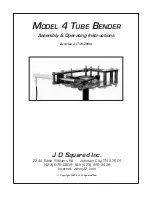
TM0497-2002
8
NACE International
6.1.9 Interference
6.1.9.1 Electromagnetic interference or induction
resulting from AC power lines or radio frequency
transmitters inducing test lead and/or instrument
errors. This condition is often indicated by a fuzzy,
fluctuating, or blurred pointer movement on an
analog instrument or erratic displays on digital
voltmeters. A DC voltmeter must have sufficient
AC rejection capability, which can be determined
by referring to the manufacturer’s specification.
6.1.9.2 Telluric or stray DC currents flowing
through the earth and piping.
6.2 Reference electrode contact resistance is reduced by:
6.2.1 Soil moisture—If the surface soil is so dry that
the electrical contact of the reference electrode with the
electrolyte is impaired, the soil around the electrode
may be moistened with water until the contact is
adequate.
6.2.2 Contact surface area—Contact resistance may
be reduced by using a reference electrode with a larger
contact surface area.
6.2.3 Frozen soil—Contact resistance may be reduced
by removing the frozen soil to permit electrode contact
with unfrozen soil.
6.2.4 Concrete
or
asphalt-paved
areas—Contact
resistance may be reduced by drilling through the
paving to permit electrode contact with the soil.
________________________________________________________________________
Section 7: Voltage Drops Other Than Across the Pipe Metal/Electrolyte Interface
7.1 Voltage drops that are present when pipe-to-electrolyte
potential measurements are made occur in the following:
7.1.1 Measurement Circuit—The voltage drop other
than across the pipe metal/electrolyte interface in the
measurement circuit is the sum of the individual
voltage drops caused by the meter current flow through
individual resistances that include:
(a)
Instrument test lead and connection resistances;
(b)
Reference electrode internal resistance;
(c)
Reference
electrode-to-electrolyte
contact
resistance;
(d)
Coating resistance;
(e)
Pipe metallic resistance;
(f)
Electrolyte resistance;
(g)
Analog meter internal resistance; and
(h)
Digital meter internal impedance.
A measurement error occurs if the analog meter
internal
resistance
or
the
digital
meter
internal
impedance is not several orders of magnitude higher
than the sum of the other resistances in the
measurement circuit.
7.1.2 Pipe—Current flowing within the pipe wall
creates a voltage drop.
This voltage drop and the
direction of the current shall be considered when the
reference electrode is not near the pipe connection and
significant
current
is
conducted
by
the
pipe.
Consideration is needed because an error in the pipe-
to-electrolyte potential measurement will occur if the
pipe current causes a significant voltage drop. Current
directed to the pipe connection from the reference
electrode causes the measured potential to be more
negative by the amount of the pipe current voltage drop
(see Figure 2a).
Conversely, the potential is less
negative by that amount if the pipe current direction is
from the pipe connection to the reference electrode
(see Figure 2b).
7.1.3 Electrolyte—When a pipe-to-electrolyte potential
is measured with cathodic protection current applied,
the voltage drop in the electrolyte between the
reference electrode and the metal/electrolyte interface
shall be considered.
Measurements taken close to
sacrificial or impressed current anodes can contain a
large voltage drop. Such a voltage drop can consist of,
but is not limited to, the following:
(a)
A voltage drop caused by current flowing to
coating holidays when the line is coated; and
(b)
A voltage drop caused by large voltage gradients
in the electrolyte that occur near operating anodes
(sometimes termed “raised earth effect”).
7.1.3.1 Testing to locate galvanic anodes by
moving
the
reference
electrode
along
the
centerline of the line may be necessary when the
locations are not known.
7.1.4 Coatings—Most coatings provide protection to
the pipe by reducing the pipe surface contact with the
environment. Due to the relative ionic impermeability
of coatings, they resist current flow.
While the
insulating ability of coatings reduces the current
required for cathodic protection, coatings are not
impervious to current flowing through them.
Current
flow through the coating causes a voltage drop that is
greater than when the pipe is bare, under the same
environmental conditions.
7.2 Specialized equipment that uses various techniques to
measure the impressed current wave form and to calculate
a pipe-to-electrolyte potential free of voltage drop is
Summary of Contents for CP 1
Page 1: ...CP 1 Cathodic Protection Tester Course Manual February 2005 NACE International 2000 ...
Page 265: ......
Page 266: ......
Page 267: ......
Page 268: ......
Page 301: ...RP0169 2002 32 NACE International ISBN 1 57590 035 1 ...
Page 535: ...TM0101 2001 24 NACE International ISBN 1 57590 137 4 ...
















































